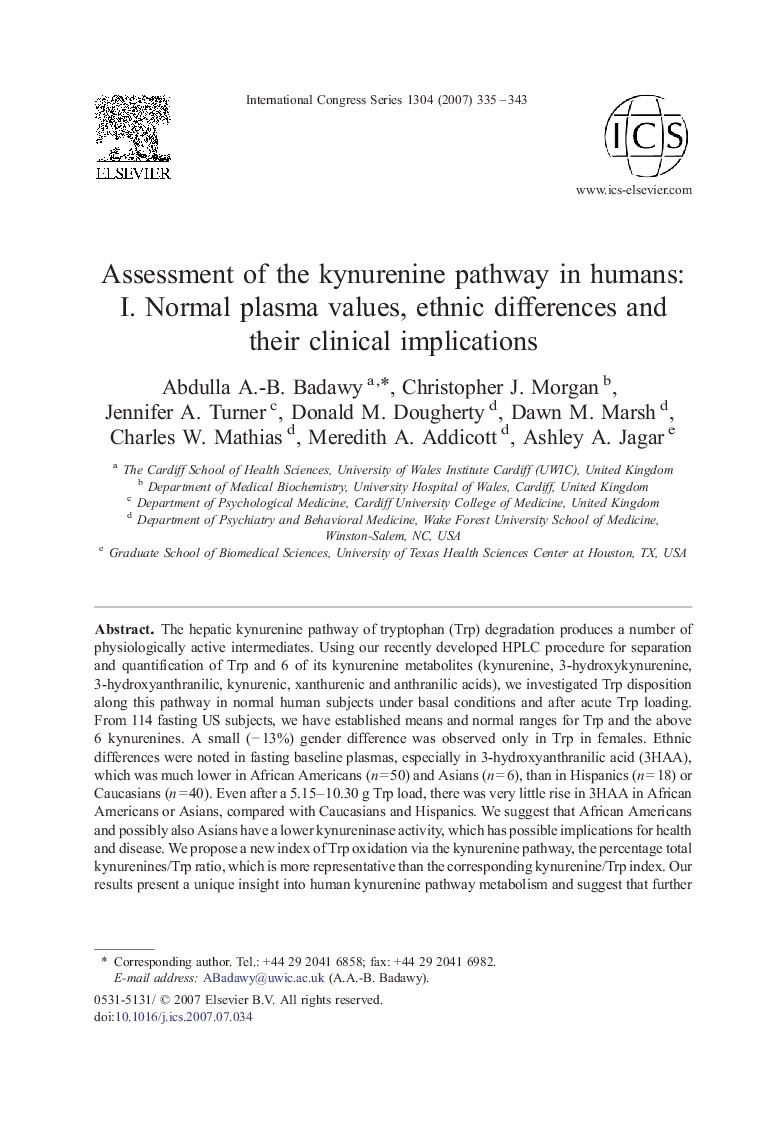| Article ID | Journal | Published Year | Pages | File Type |
|---|---|---|---|---|
| 2576409 | International Congress Series | 2007 | 9 Pages |
The hepatic kynurenine pathway of tryptophan (Trp) degradation produces a number of physiologically active intermediates. Using our recently developed HPLC procedure for separation and quantification of Trp and 6 of its kynurenine metabolites (kynurenine, 3-hydroxykynurenine, 3-hydroxyanthranilic, kynurenic, xanthurenic and anthranilic acids), we investigated Trp disposition along this pathway in normal human subjects under basal conditions and after acute Trp loading. From 114 fasting US subjects, we have established means and normal ranges for Trp and the above 6 kynurenines. A small (− 13%) gender difference was observed only in Trp in females. Ethnic differences were noted in fasting baseline plasmas, especially in 3-hydroxyanthranilic acid (3HAA), which was much lower in African Americans (n = 50) and Asians (n = 6), than in Hispanics (n = 18) or Caucasians (n = 40). Even after a 5.15–10.30 g Trp load, there was very little rise in 3HAA in African Americans or Asians, compared with Caucasians and Hispanics. We suggest that African Americans and possibly also Asians have a lower kynureninase activity, which has possible implications for health and disease. We propose a new index of Trp oxidation via the kynurenine pathway, the percentage total kynurenines/Trp ratio, which is more representative than the corresponding kynurenine/Trp index. Our results present a unique insight into human kynurenine pathway metabolism and suggest that further studies may help understand and/or elucidate biochemical mechanisms in health and disease.
